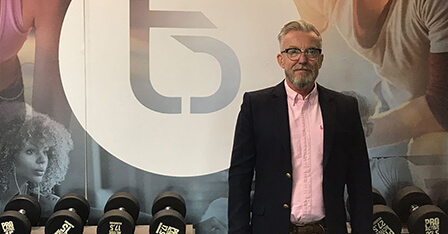11 Preemptive Safety Measures Leaders Can Implement to Keep Workers Safe
No workplace is absolutely safe, but there are plenty of steps employers can take to mitigate risks and make their workplaces as safe as possible. Here are 11 preemptive safety measures leaders can take to keep workers safe.
1. Inspect equipment regularly
Regularly inspect all of the equipment in your workplace. This includes everything from machinery to hand tools. Make sure that all equipment is in good working condition and that there are no potential hazards. If you find any problems, fix them immediately. Inspection is one thing, but acting on any irregularities is even more important. Regular upkeep of equipment is an essential part of preventative maintenance on any job site so that unfortunate accidents due to faulty machinery and tools are much less likely to happen.
2. Encourage frequent breaks
When you encourage your employees to take frequent breaks (within reason, of course), you ensure that they stay fresh and alert throughout the day. This reduces the likelihood of accidents, as well as improves their overall productivity. If you look at a lot of the accident literature, they often happen when people have been working continuously for too long, are not mentally sharp and their minds are wandering.
3. Promote a healthy lifestyle
A healthy lifestyle includes maintaining a healthy weight, eating nutritious foods, and getting regular exercise. Employees who take care of themselves are less likely to get sick or injured on the job. They also have more energy and are more productive. Employees who are unhealthy are more likely to make mistakes, which can lead to accidents, are more likely to be tired and sluggish and may even be at a risk for things like fainting and heart attacks, which can lead to catastrophic accidents.
4. Provide adequate training
Proper training is essential for preventing accidents. Employees should be properly trained on how to use equipment, how to handle hazardous materials, and how to work safely in general. If employees are not properly trained, they are more likely to make mistakes that could lead to accidents.
Training might also include things like ergonomics, so that employees know how to work in a way that minimizes the risk of repetitive stress injuries.
5. Enforce safety rules
If you have safety rules in place, make sure they are enforced. Employees should be held accountable for following the rules. This will help to prevent accidents and create a culture of safety in your workplace. You can also incentivize people to respect and follow safety rule by rewarding them for doing so. Try instituting a “safety bonus” program where employees who don’t have any accidents get a bonus or a reward at the end of the year.
6. Use safety devices
Safety devices can help to prevent accidents. For example, if you have a machine with moving parts, you should use guards to protect employees from getting injured. If you work with hazardous materials, you should use proper containment devices. Safety devices are not only an important part of an overall safe workplace, but they are fundamental to ensuring that the company does not have to pay out any unnecessary insurance claims.
7. Keep the workplace clean
A clean workplace is a safer workplace. clutter and debris can lead to accidents. Make sure that all areas of your workplace are clean and free of potential hazards. Cleanliness and organization also promote a sense of order that is good for employee morale and productivity.
8. Implement a safety management system
A safety management system is a formal process for managing safety in the workplace. It includes setting goals, implementing policies and procedures, conducting audits, and providing training. A safety management system can help to identify potential hazards and accidents before they happen. It also creates a culture of safety in the workplace.
9. Use proper lighting
Poor lighting can lead to accidents. Make sure that all areas of your workplace are well-lit. If you have employees working in areas with low lighting, provide them with task lighting. A lot of accidents happen in low-light settings, especially if people are using power tools or working with hazardous materials.
10. Have an emergency plan
In the event of an accident, it’s important to have a plan in place. Make sure that all employees know what to do in case of an emergency. Post signs and have drills so that everyone is familiar with the procedures. Having an emergency plan will help to minimize the damage caused by accidents and ensure that everyone stays safe.
Having an emergency plan in place might also mean having designated employees in the office or on the worksite who are trained in things like CPR and who are responsible for leading evacuations. Drill regularly so that everyone knows what to do and where to go in an emergency.
11. Post safety signs
Safety signs can help to remind employees of potential hazards. They can also help to direct employees to the safest route through your workplace. Make sure that all safety signs are clearly visible and easy to understand. One of the biggest dangers in any workplace is unsigned areas where they should be some kind of signage. Posting safety signs is an easy and effective way to improve safety in your workplace.
Conclusion
Taking these ten preemptive safety measures will help to keep workers safe and prevent accidents. Implementing a safety management system, conducting regular inspections, and using proper lighting are just some of the ways you can create a safer workplace. By taking these steps, you’ll be one step closer to creating a culture of safety in your workplace.







